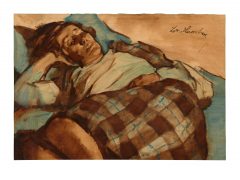Lotte Laserstein
Lotte Laserstein (1898-1993) is a painter of the “lost generation”, who had her breakthrough between the two world wars and was no longer recognized in Germany after 1945.
After studying at the Akademische Hochschule für Bildende Künste in Berlin, her career took off in 1931 with her 1st solo exhibition at the Gurlitt Gallery, Berlin and participation in the Große Berliner Kunstausstellung at the Bellevue Palace.
From 1933 onwards, the Nazis made it increasingly difficult and later impossible for her to work because of her Jewish origins. In 1937, she emigrated to Sweden, where she lived
until her death.
In 2003, her work was comprehensively presented at the Verborgene Museum (Berlin) to a broad public for a first time. Entitled “Lotte Laserstein. Face to Face”, a major museum exhibition in cooperation with the Städel Museum in Frankfurt and the Berlinische Galerie
followed in 2018/19.
Her impressive portraits show images of the modern woman. Stylistically, she moves between Realism and New Objectivity, whereby especially the comparison with the latter underlines the independence of her realism.
- Prices include German VAT. Exclusive of shipping costs for delivery to the European Union. All prices are subject to change and availability. Change region and currency







